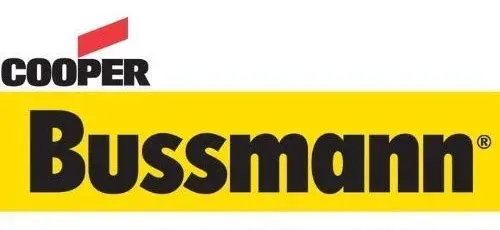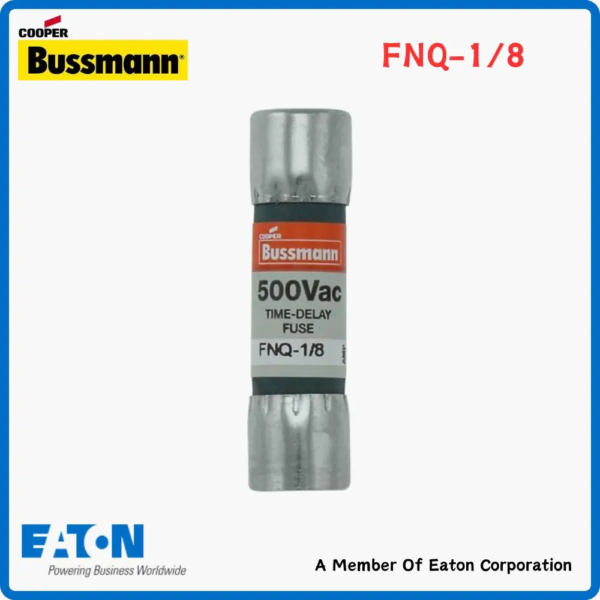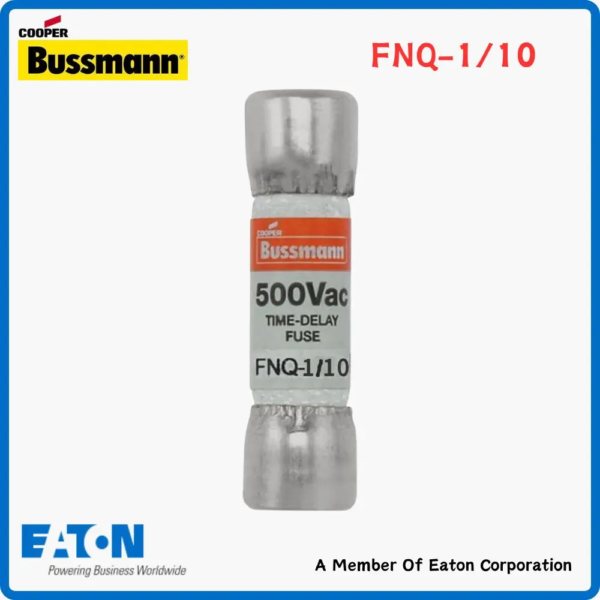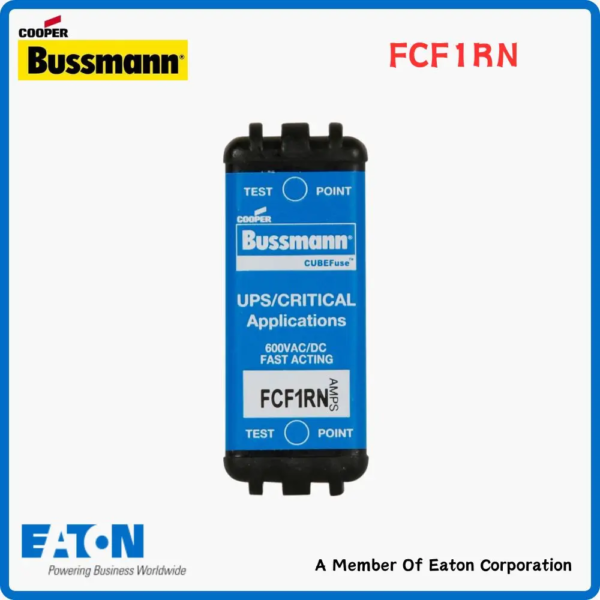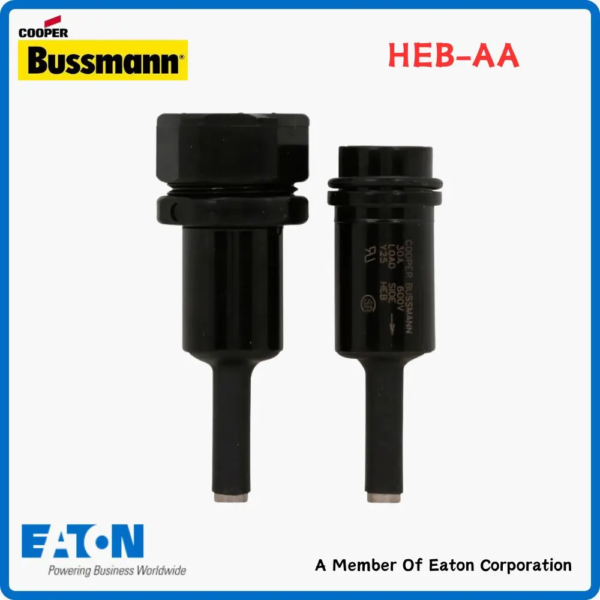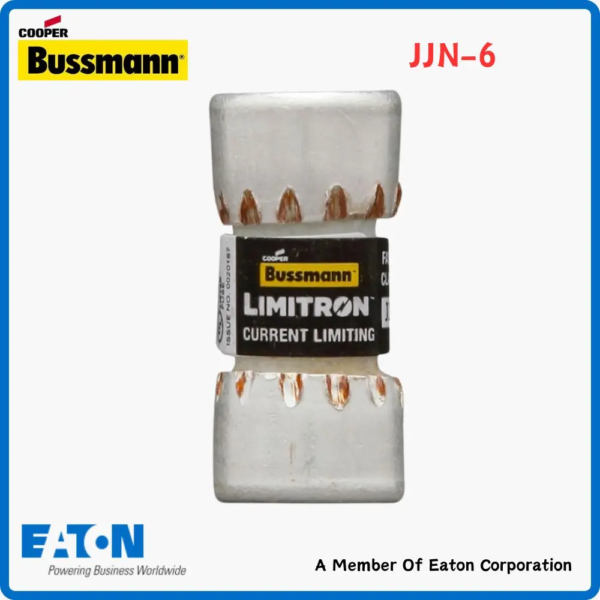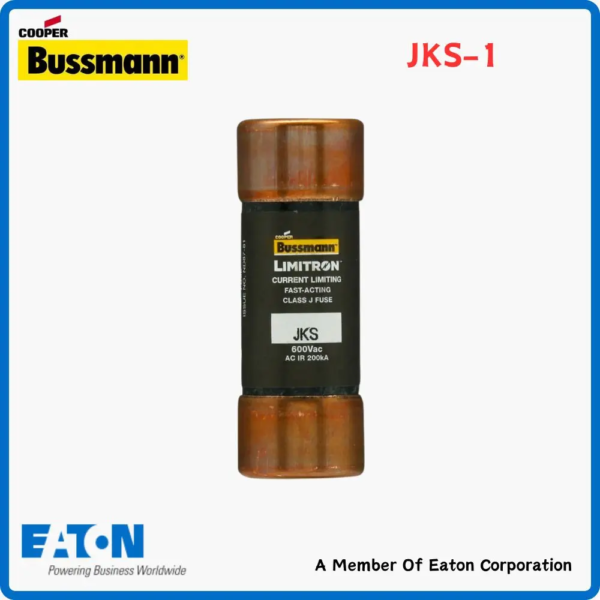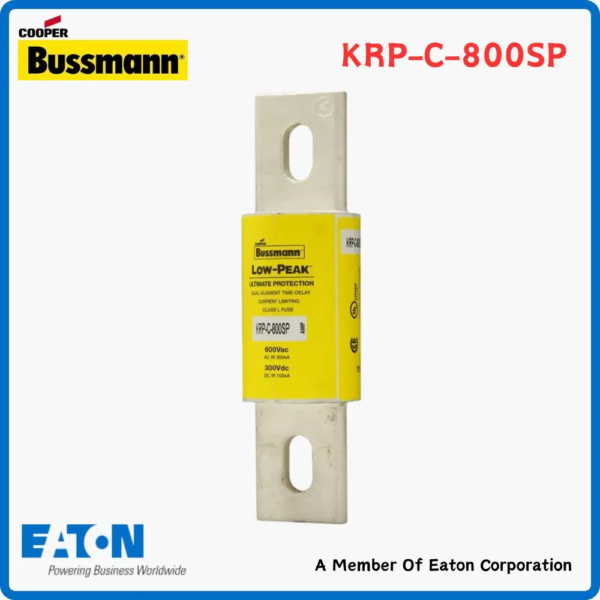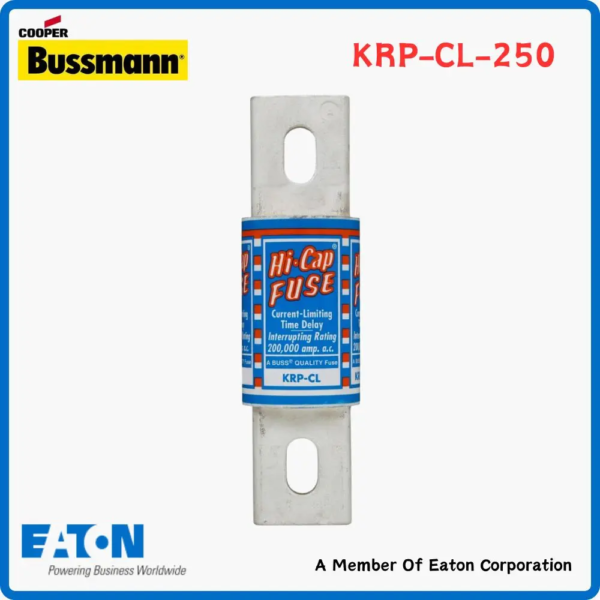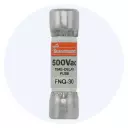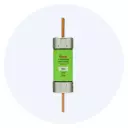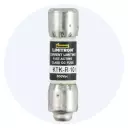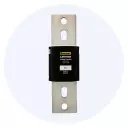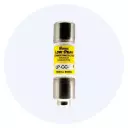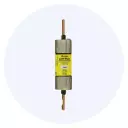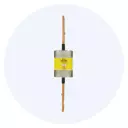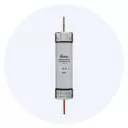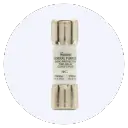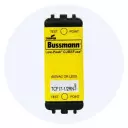Bussmann FNQ Fuses
“Eaton Bussmann Series UL Class CF, FCF 1RN Fuse” has been added to your cart. View cartEaton Bussmann FNQ-1/8 Low Voltage Fuse
Rated 5.00 out of 5In stock
$16.74EachSKU: FNQ-1/8Weight 0.175 lbs Dimensions 0.01138889 × 0.01138889 × 0.04166667 yd Brand Eaton Bussmann
Eaton-Bussmann, with its headquarters in St. Louis, Missouri, is a division of Eaton Corporation that specializes in the production of circuit protection products. These products are designed for use in the electrical, electronic, and automotive industries, both domestically and on a global scale. The company boasts a strong manufacturing network with facilities located in three domestic and six international locations, reflecting its commitment to serving customers worldwide. With a team of approximately 3,000 employees, Eaton-Bussmann is well-positioned to meet the ever-evolving needs of its customers in the electrical protection industry.
Eaton stands as a forward-thinking leader in power management, focused on enhancing lifestyles and safeguarding the planet. Leveraging the worldwide momentum of electrification and digital innovation, they propel the global shift towards renewable energy, addressing pressing power management issues on a global scale.Product type Low Voltage Fuse
Voltage 500 Volt
Eaton Bussmann FNQ-R-1/10 Low Voltage Fuse
Rated 5.00 out of 5In stock
$11.33EachSKU: FNQ-R-1/10Weight 0.175 lbs Dimensions 0.01138889 × 0.01138889 × 0.04166667 yd Brand Eaton Bussmann
Eaton-Bussmann, with its headquarters in St. Louis, Missouri, is a division of Eaton Corporation that specializes in the production of circuit protection products. These products are designed for use in the electrical, electronic, and automotive industries, both domestically and on a global scale. The company boasts a strong manufacturing network with facilities located in three domestic and six international locations, reflecting its commitment to serving customers worldwide. With a team of approximately 3,000 employees, Eaton-Bussmann is well-positioned to meet the ever-evolving needs of its customers in the electrical protection industry.
Eaton stands as a forward-thinking leader in power management, focused on enhancing lifestyles and safeguarding the planet. Leveraging the worldwide momentum of electrification and digital innovation, they propel the global shift towards renewable energy, addressing pressing power management issues on a global scale.Product type Low Voltage Fuse
Voltage 500 Volt
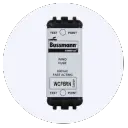 Bussmann WCF Fuses
Bussmann WCF Fuses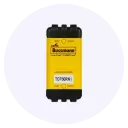 Bussmann FCF Fuses
Bussmann FCF Fuses
Eaton Bussmann Series UL Class CF, FCF 1RN Fuse
Rated 5.00 out of 5In stock
$79.99SKU: FCF1RNBrand Eaton Bussmann
Eaton-Bussmann, with its headquarters in St. Louis, Missouri, is a division of Eaton Corporation that specializes in the production of circuit protection products. These products are designed for use in the electrical, electronic, and automotive industries, both domestically and on a global scale. The company boasts a strong manufacturing network with facilities located in three domestic and six international locations, reflecting its commitment to serving customers worldwide. With a team of approximately 3,000 employees, Eaton-Bussmann is well-positioned to meet the ever-evolving needs of its customers in the electrical protection industry.
Eaton stands as a forward-thinking leader in power management, focused on enhancing lifestyles and safeguarding the planet. Leveraging the worldwide momentum of electrification and digital innovation, they propel the global shift towards renewable energy, addressing pressing power management issues on a global scale.Product type Fuse
Voltage 600 Volt
 Bussmann FRS Fuses
Bussmann FRS Fuses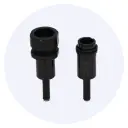 Bussmann HEB-AA Fuse
Bussmann HEB-AA Fuse
Eaton Bussmann HEB-AA Inline Fuse Holder
Rated 5.00 out of 5In stock
$18.99SKU: 504-HEB-AA-2Brand Eaton Bussmann
Eaton-Bussmann, with its headquarters in St. Louis, Missouri, is a division of Eaton Corporation that specializes in the production of circuit protection products. These products are designed for use in the electrical, electronic, and automotive industries, both domestically and on a global scale. The company boasts a strong manufacturing network with facilities located in three domestic and six international locations, reflecting its commitment to serving customers worldwide. With a team of approximately 3,000 employees, Eaton-Bussmann is well-positioned to meet the ever-evolving needs of its customers in the electrical protection industry.
Eaton stands as a forward-thinking leader in power management, focused on enhancing lifestyles and safeguarding the planet. Leveraging the worldwide momentum of electrification and digital innovation, they propel the global shift towards renewable energy, addressing pressing power management issues on a global scale.Product type Fuse
Voltage 600 Volt
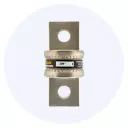 Bussmann JJN Fuses
Bussmann JJN Fuses
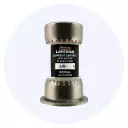 Bussmann JJS Fuses
Bussmann JJS Fuses
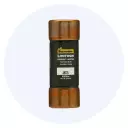 Bussmann JKS Fuses
Bussmann JKS Fuses
Eaton Bussmann Fuse JKS-1 Low Voltage Fuse
Rated 5.00 out of 5In stock
$13.99SKU: JKS-1Brand Eaton Bussmann
Eaton-Bussmann, with its headquarters in St. Louis, Missouri, is a division of Eaton Corporation that specializes in the production of circuit protection products. These products are designed for use in the electrical, electronic, and automotive industries, both domestically and on a global scale. The company boasts a strong manufacturing network with facilities located in three domestic and six international locations, reflecting its commitment to serving customers worldwide. With a team of approximately 3,000 employees, Eaton-Bussmann is well-positioned to meet the ever-evolving needs of its customers in the electrical protection industry.
Eaton stands as a forward-thinking leader in power management, focused on enhancing lifestyles and safeguarding the planet. Leveraging the worldwide momentum of electrification and digital innovation, they propel the global shift towards renewable energy, addressing pressing power management issues on a global scale.Product type Low Voltage Fuse
Voltage 600 Volt
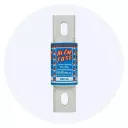 Bussmann KRP Fuses
Bussmann KRP Fuses
Eaton-Bussmann Fuse Tips and Tricks Guide
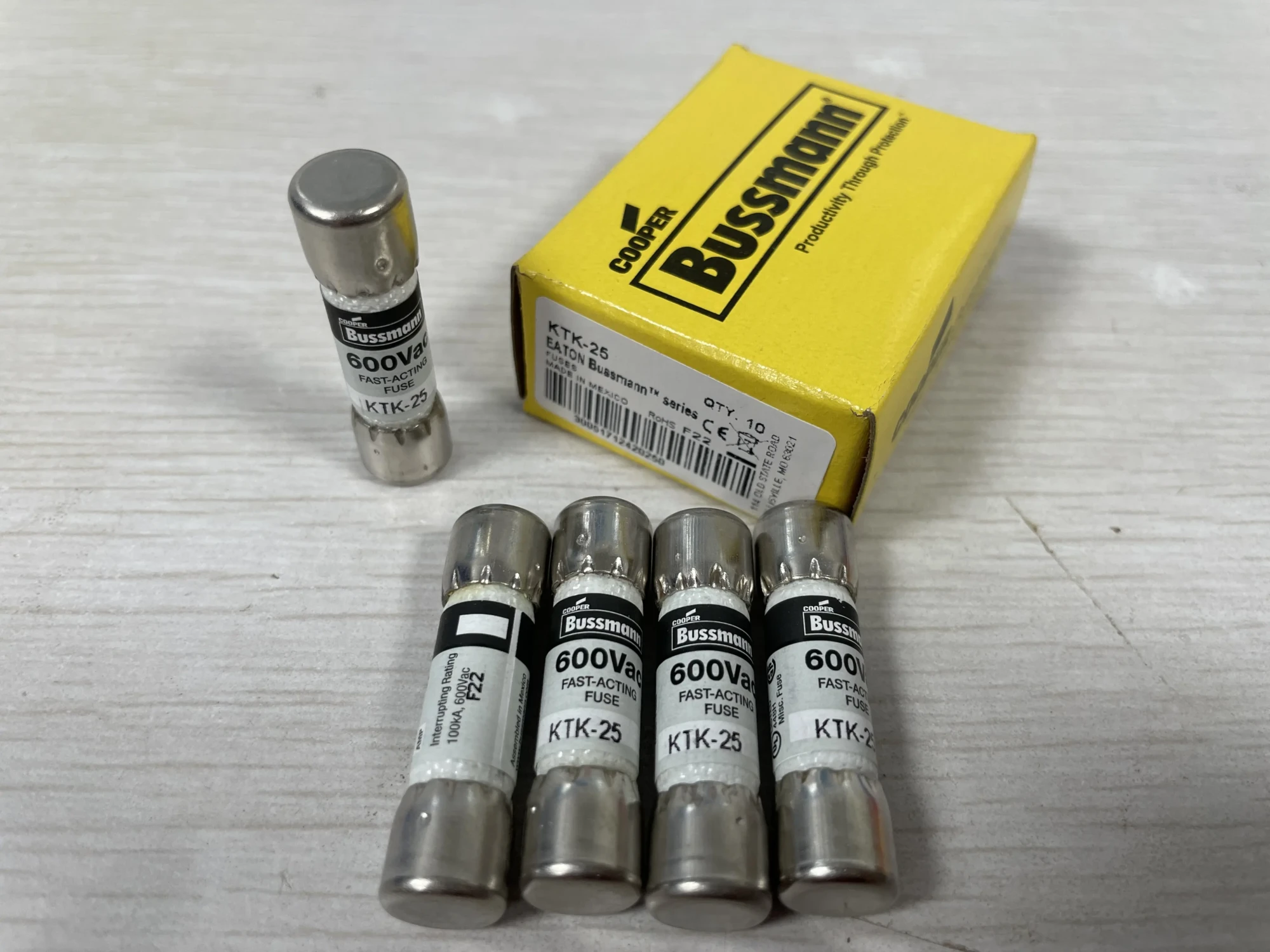
Unlocking the Power of Eaton-Bussmann Fuses: A Comprehensive Guide
In the realm of electrical engineering, circuit protection is a critical aspect that ensures the safety and reliability of electrical systems. Eaton-Bussmann, a renowned intelligent power management company, has been at the forefront of providing innovative circuit protection solutions. As an authorized distributor of Eaton-Bussmann products, we are committed to providing our customers with genuine and high-quality products that meet the manufacturer’s stringent standards. In this blog post, we will delve into the world of Eaton-Bussmann fuses, exploring their product parameters, specifications, uses, and precautions.
Introduction to Eaton-Bussmann Fuses
Eaton-Bussmann fuses are designed to provide overcurrent and overvoltage protection for electrical circuits. These fuses are engineered to interrupt the flow of electrical current in the event of a fault, preventing damage to equipment and ensuring the safety of people and the environment. With a wide range of products to choose from, including North American fast-blow fuses, IEC standard fuses, American standard cylindrical fuses, and more, Eaton-Bussmann has a solution to suit every electrical protection need.
Product Parameters and Specifications
Eaton-Bussmann fuses come in various types, each with its unique characteristics and specifications. Some of the key product parameters to consider when selecting a fuse include:
- Voltage rating: The maximum voltage that the fuse can handle.
- Current rating: The maximum current that the fuse can handle.
- Breaking capacity: The maximum fault current that the fuse can interrupt.
- Response time: The time it takes for the fuse to respond to an overcurrent condition.
- Size and shape: The physical dimensions of the fuse, which can affect its installation and use.
Understanding these product parameters is crucial in selecting the right fuse for your application. For example, a fuse with a high voltage rating and high current rating may be suitable for heavy-duty industrial applications, while a fuse with a lower voltage rating and lower current rating may be more suitable for residential or commercial applications.
Uses and Applications
Eaton-Bussmann fuses have a wide range of applications across various industries, including:
- Industrial automation: Fuses are used to protect industrial control systems, motor control centers, and power distribution systems.
- Electrical distribution: Fuses are used to protect electrical distribution systems, including panelboards, switchboards, and circuit breakers.
- Transportation: Fuses are used in automotive, aerospace, and other transportation applications to protect electrical systems.
- Renewable energy: Fuses are used to protect solar and wind power systems, ensuring the safe and reliable operation of these systems.
Precautions and Safety Considerations
When working with Eaton-Bussmann fuses, it is essential to follow proper safety precautions to avoid injury or damage. Some key safety considerations include:
- Proper installation: Fuses should be installed in accordance with the manufacturer’s instructions and relevant electrical codes and standards.
- Regular maintenance: Fuses should be regularly inspected and maintained to ensure they are functioning correctly.
- Personal protective equipment: When working with electrical systems, it is essential to wear personal protective equipment, including gloves, safety glasses, and a hard hat.
Conclusion
In conclusion, Eaton-Bussmann fuses are a critical component in ensuring the safety and reliability of electrical systems. By understanding the product parameters, specifications, uses, and precautions associated with these fuses, engineers and electrical professionals can make informed decisions when selecting and installing fuses for their applications. As an authorized distributor of Eaton-Bussmann products, we are committed to providing our customers with genuine and high-quality products, as well as expert technical support and guidance. Whether you are working on a industrial automation project, electrical distribution system, or renewable energy installation, Eaton-Bussmann fuses have a solution to suit your needs.
Frequently Asked Questions
- What is the difference between a fast-blow fuse and a slow-blow fuse?
A fast-blow fuse is designed to interrupt the flow of electrical current quickly, typically within 10-100 milliseconds, while a slow-blow fuse is designed to allow for a brief period of overcurrent before interrupting the flow of electrical current. - Can I use a fuse with a higher voltage rating than the system voltage?
Yes, it is generally acceptable to use a fuse with a higher voltage rating than the system voltage, but it is essential to ensure that the fuse is compatible with the system and meets the relevant electrical codes and standards. - How often should I inspect and maintain my fuses?
Fuses should be regularly inspected and maintained in accordance with the manufacturer’s instructions and relevant electrical codes and standards. This may include visual inspections, testing, and replacement of fuses as needed.
By following these tips and guidelines, you can ensure the safe and reliable operation of your electrical systems, and make informed decisions when selecting and installing Eaton-Bussmann fuses.
